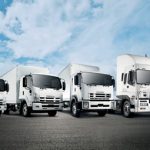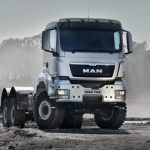Scania’s King on alternative fuels
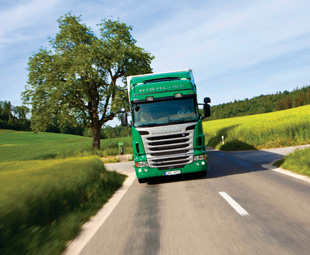
South Africa is well on its way to seeing alternative-fuelled vehicles roaming its streets – and Scania is in pole position to get us there.
South Africa’s drive towards a future of alternative-fuelled vehicles is in safe hands … Anthony King, key account manager: Alternative Fuels, at Scania South Africa, says that the company has been involved in sustainable energy for years.
“We built our first bioethanol engine in 1916 and we’ve been pushing renewable energy ever since. We’re definitely ahead in terms of green technology and sustainability.”
But first, what is an alternative fuel? “All those years have led us to the three biofuels – biogas, bioethanol and biodiesel,” explains King. Biofuels are part of the natural carbon cycle, meaning they do not contribute to a net increase of CO2 in the atmosphere – unlike fossil fuels (petrol and diesel) that release this gas (among others) when burnt.
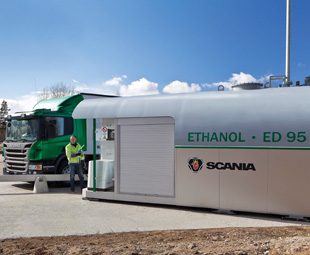 Bioethanol, the most widely used biofuel in transport, can be produced from a variety of raw materials (like sugar cane, sugar beet or cellulose), and is used both as a pure fuel and in low blends.
Bioethanol, the most widely used biofuel in transport, can be produced from a variety of raw materials (like sugar cane, sugar beet or cellulose), and is used both as a pure fuel and in low blends.
Biodiesel can be made from various sources, like rapeseed (RME) or waste cooking oil. It has the advantage of being available in commercial volumes and is primarily used by blending with diesel, though it can be used in a pure form.
Biogas consists of the same molecule (methane) as compressed natural gas (CNG), but is renewable while CNG is a fossil fuel. Biogas can be produced from a number of sources, the most cost-efficient and sustainable method being local sewage or waste.
Alexander Taftman, product and marketing director at Scania South Africa, adds: “Not too far in the future, I don’t think we’ll be calling these alternative fuels. Instead, we will optimise each type of transport in relation to the type of fuel that is most suitable; which could be ethanol, gas, diesel or petrol. There is a perfect fuel for each type of vehicle application.”
While the company is represented on various global climate-change forums, locally it is working with government and the private sector to create awareness. “You’ve got to use policy, opportunity and awareness to promote green technology,” says King.
“We have to share with government what is available and create the awareness, thereafter legislation comes into place. Government seems to have shifted slightly in realising the importance of green technology, with its tenders looking towards gas technology.
“We’re working with the South African Bureau of Standards (SABS) to make sure regulations are in place. We also need to align with the private sector to encourage use of our technology.” King is keen to note that, although the process is slow, awareness is starting to show.
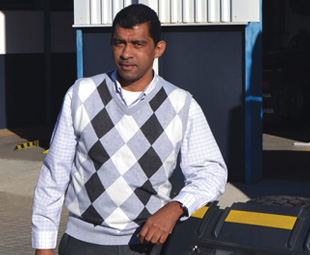 And what about the technology that Scania is so proud of? The company currently has three commercially available alternative-fuel engines: a nine-litre, 201 kW (270 hp) bioethanol engine that uses a five percent ignition improver (ED95); a 201 or 231 kW (270 or 310 hp) biogas engine, which is also able to run on CNG; and, lastly, in general all Scania’s Euro-5 engines, which are approved to run using up to 100 percent biodiesel with slight modifications.
And what about the technology that Scania is so proud of? The company currently has three commercially available alternative-fuel engines: a nine-litre, 201 kW (270 hp) bioethanol engine that uses a five percent ignition improver (ED95); a 201 or 231 kW (270 or 310 hp) biogas engine, which is also able to run on CNG; and, lastly, in general all Scania’s Euro-5 engines, which are approved to run using up to 100 percent biodiesel with slight modifications.
The company positions these solutions in line with the intended application. For example, bioethanol and biogas are best suited to regional or inner-city operations like buses, waste collectors and distribution vehicles. Biodiesel, the quality of which is very important, is suited for long-haulage or coaches.
Scania has a bioethanol bus in Cape Town that has been used for various activities over the last four years. By 2015 it aims to have some bioethanol vehicles operating, while Scania gas-power should here soon. The aim is to assemble these vehicles locally, which will also help boost employment.
Taftman sums it up thus: “It’s a common goal for all countries to become less dependent on oil – it’ll also generate more local jobs and open up trade.”
“The emerging middle class is going to move to transport and vehicle systems that are sustainable,” continues King. “It’s time we put a line in the sand – a green line.”
Published by
Focus on Transport
focusmagsa

